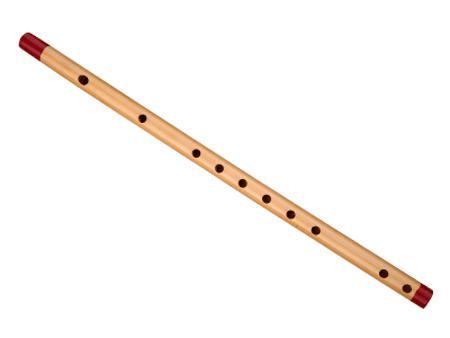The bamboo flute (Sao Truc), is made from a stem of fine bamboo pierced with finger holes. The bamboo flute has long been attached to the cultural and spiritual life of the Vietnamese. It can be said that the bamboo flute contains the musical essence of the Vietnamese countryside together with the four tranquil seasons. Vietnamese people used to play Sao Truc on the fields when taking a rest, or even at nights before going to bed.
Sao Truc refers to a wind instrument with arch-form blowing hole. This very flute is so popular in countryside of Vietnam.
Bamboo flute is made from a bamboo or hornless bamboo tube with length varying from 40 to 55 cm, diameter varying from 1.5 to 2 cm. At one end of flute, there is an oval hole known as blowing hole. There is a rush pith or a soft wooden piece located inside the tube near the blowing hole and functions to adjust pitches when necessary. Being straightly with the blowing hole are 6 finger holes, of which, the first hole is 12 cm far from the blowing hole, while the others are in the same distance of 1 cm. Uncovering in turns 6 finger holes will give respective tones including Do1, Re1, Mi1, Fa1, Sol1, La1, Si1, and Do2. At the other end on the other side of the flute, there is a non-covering hole called definite-pitched hole.
When playing, flutist holds the flute transversally to the right side and places his mouth at the blowing hole. The flutist can control air column (slight blowing makes air column move slowly and weakly, as opposed to strong blowing makes air column move fast and strongly). Sao Truc is usually performed solo or in ensemble with other instruments in orchestras of Vietnamese popular opera Cheo, Van singing genre, and Royal Small Orchestra.
At the end of 70 decade of the 20th century, artists Dinh Thin and Ngo Nam made renovation to this flute as they changed the 6-finger-hole flute into 10-finger-hole flute in order to extend register. Thanks to this, flutists find more easily when performing musical pieces such as “Tieng goi mua xuan” (The call of spring) by Dinh Thin, Tinh que (Love for the Country) by Hoang Dam, and a number of others.

